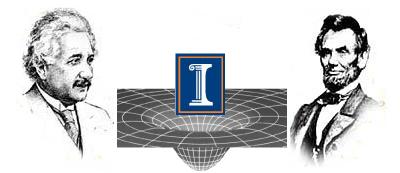Evolution of Matter and Magnetic Fields

We follow the evolution of the matter and magnetic fields of a gaseous disk. In the cavity of the disk are two black holes, with individual cases having a mass ratio of $q = 1, 2$ or $4$. Green lines depict magnetic field lines within the disk. The seeding points used in drawing these field lines were taken from a subset of fluid test particles that were evolved during the simulation. By drawing magnetic field lines from these test particles, we can visualize the evolution of the magnetic field lines, because they are attached ("frozen in") to the same particles for all time. White lines represent the field lines threading the polar regions above the black holes. These field lines are drawn from fixed grid points above each black hole pole.
The black holes have spins on the orbital plane ($q=1$ case) or $45^{\circ}$ above it ($q=2$ and $q=4$ cases) and the disk has inner radius $ R_{in}/M = 18$. The color bar shows the rest mass density in the disk normalized by the initial maximum disk density.
Quasistationary accretion onto the black holes is established as well as an outgoing jet confined and driven by a helical, tightly wound magnetic field emerging from the black holes' poles. The jet carries an EM (Poynting) luminosity consistent with the Blandford-Znajek mechanism.
In this simulation the gravitational field is evolved by solving the Einstein field equations via the BSSN formalism and the matter and magnetic fields are evolved by solving the equations of GRMHD via a high-resolution shock capturing scheme.
















